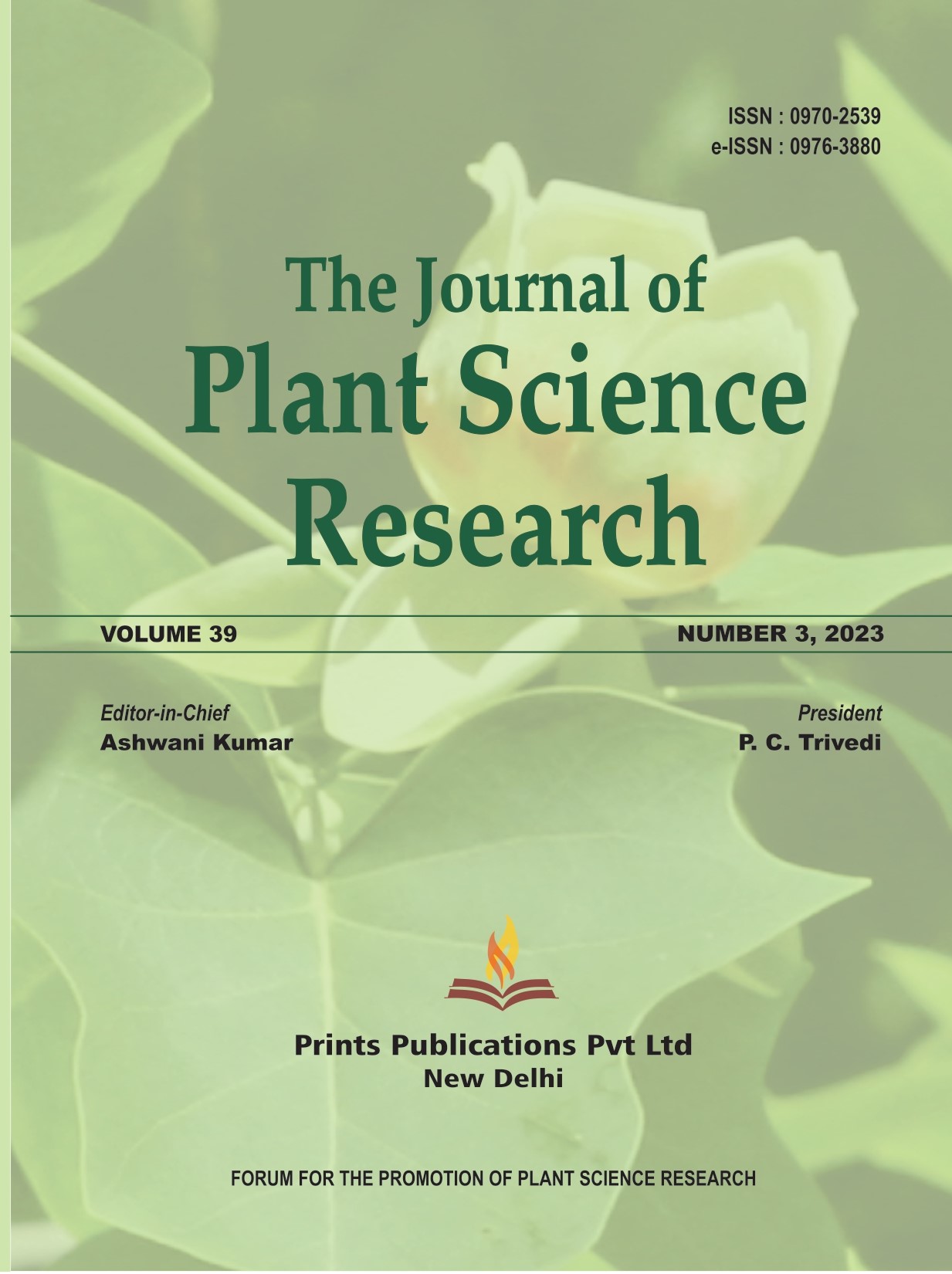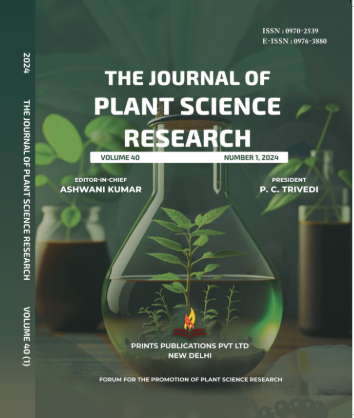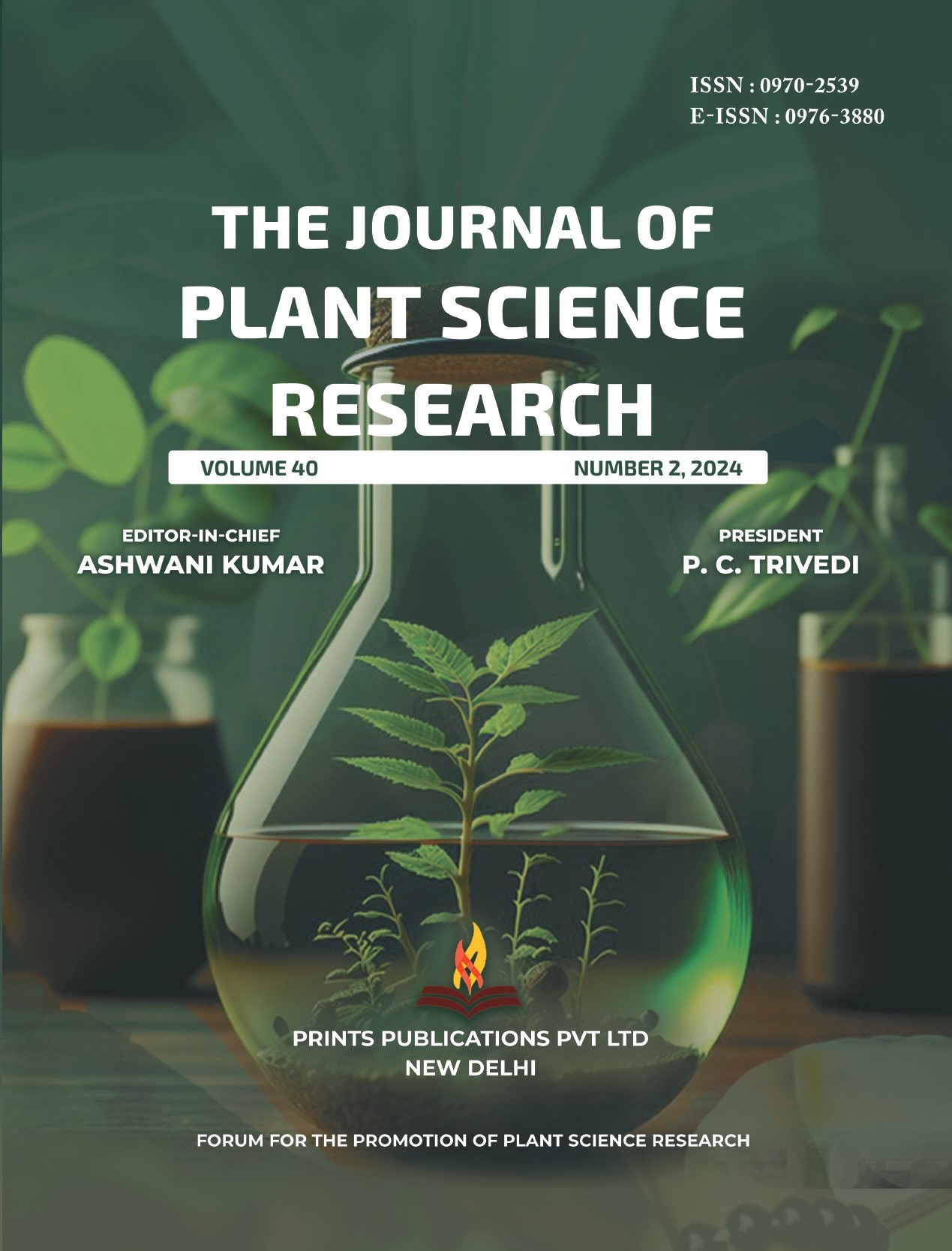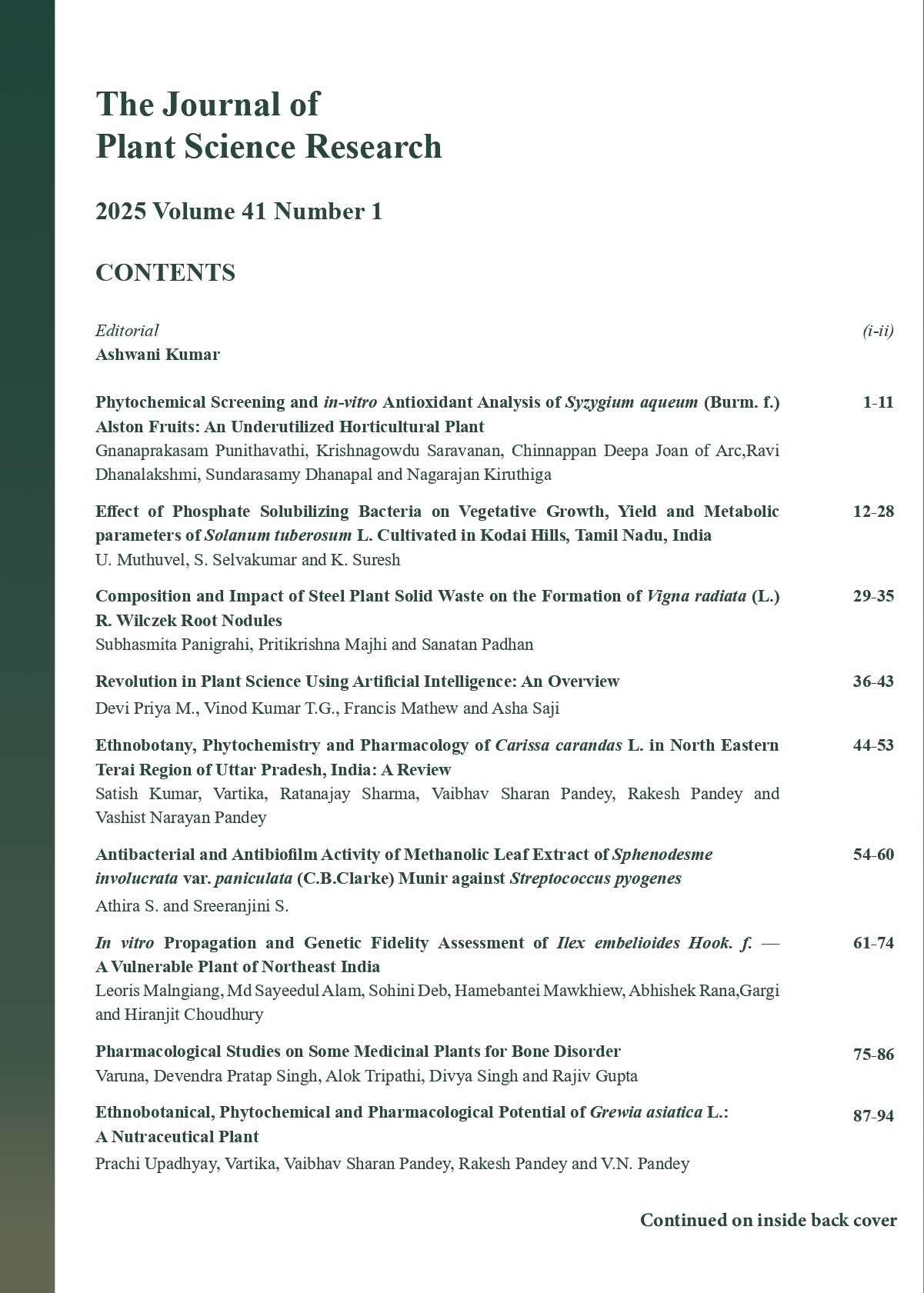The Journal of Plant Science Research - A UGC Care-Listed Journal
Published in Association with Forum For the Promotion of Plant Science Research
Current Volume: 41 (2025 )
ISSN: 0970-2539
e-ISSN: 0976-3880
Periodicity: Tri-annual
Month(s) of Publication: April, August & December
Subject: Botany
DOI: 10.32381/JPSR
Online Access is Free for Life Member
Hierarchy in Plants: Unicellular, Colonial and Multicellular
By : Kirandeep Kaur, Pushp Sharma
Page No: 207-220
Abstract
Carolus Linnaeus (mid-1700’s) was a Swedish biologist who established a simple system for classifying and naming organisms. He developed a Hierarchy for classifying organisms that is the Basis for Modern Taxonomy. Arrangement of taxonomic categories in an ascending series ranging from the lowest to the highest category is taxonomic hierarchy. R.H.Whittaker has used five critera for delimiting kingdoms. Five kingdoms are- Monera, Protista, Fungi, Plantae, Animalia. Six kingdom classification was given by Carl woese. He gave 3 domain theory that included 6 kingdom- Archaebacteria, Monera, Protista, Mycota, Plantae, Animalia. Plant kingdom is divided into vascular (Tracheophytes) and non vascular plants (Bryophytes). Non vascular includes liverworts (Marchantiophyta), hornworts (Anthocerophyta) and mosses (Bryophyta). Vascular plants are divided into spore producing plants (Pteridophytes) and seed producing plants (Spermatophytes). Pteridophytes includes club mosses (Lycopodiophyta), horsetails (Equisetophyta) and ferns (Pteridophyta). Seed producing plants are further divided into flowering (Angiosperms) and non-flowering plants (Gymnosperms). Non flowering plants include conifers (Pinophyta), cycads (Cycadophyta) and ginkgo (Ginkgophyta). Angiosperms includes monocots (plants with one seed leaf monocotyledon) and dicots (plants with two seed leaves dicotyledon). Phylogenetic studies favour a single origin of land plants from charophycean green algae. Different types of microtubule organization are found within the green lineage during cytokinesis 1.Phycoplast- is characterized by the collapse of the spindle apparatus after mitosis, with the microtubules oriented in the same direction as the plane of cell division e.g. Charyophytes and land plants. 2. Phragmoplast- characterized by the development of a persistent telophase spindle and a cleavage furrow, with the microtubules oriented at right angles to the plane of cell division e.g. Chlorophytes and ulvophytes. Algae evolved from single cell plants. Two competing theories of the development of alternating generations in land plants- The homologous theory and the antithetie theory. Homologous theory- sporophytic considered to be a direct modification of gametophyte. Gametophytes and sporophytes of certain algae (e.g. Ulva) are similar (isomorphic). Such gametophytes and sporophytes are thus considered “homologous”. Antithetic Theory- Bower (1908) suggested an alternative hypothesis for the origin of the sporophyte of land plants. Only gametophyte was thought to have been present initially in the algal life cycle, the sporophyte arising subsequently and in correspondence with land occupancy by the gametophyte. Bryophyta evolved from algae and pteridophyta. Pteridophyta evolved from algae as well as from bryophyta Gymnosperm evolved from pteridophyte and progymnosperm. Angiosperm evolved parallel with Gymnosperm, it is unclear that what type of plant actually gave rise to Angiosperm.
Authors :
Kirandeep Kaur and Pushp Sharma : Department of Plant Breeding and Genetics, Punjab Agricultural University, Ludhiana






